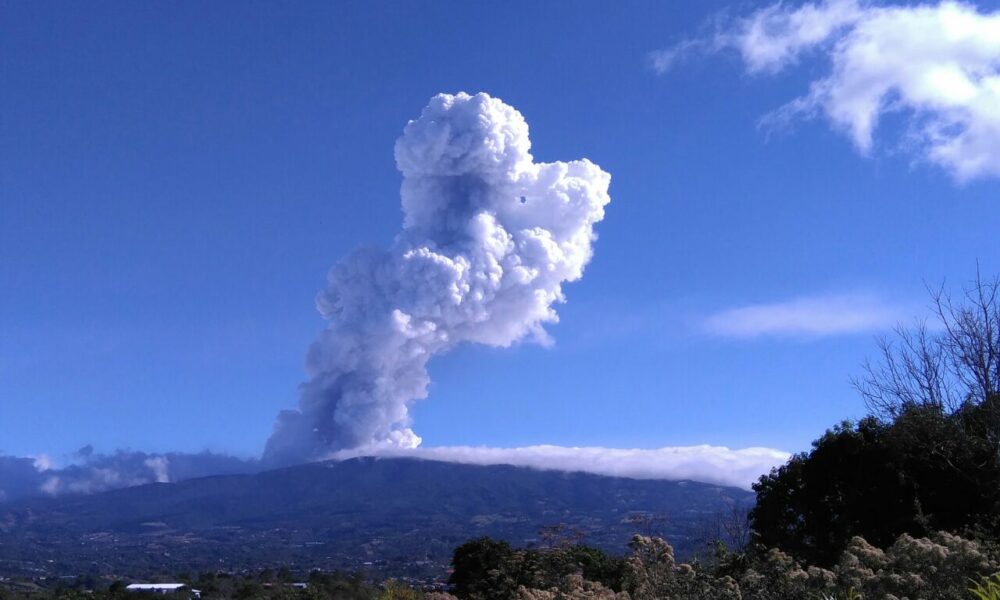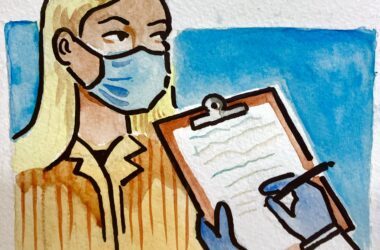Gasses emitted from volcanoes can provide crucial insight into their activity and eruptions, but gas samples are difficult, and often dangerous, to collect by hand. McGill scientists are among the first to overcome this issue by employing drones to collect samples remotely by piloting them into the crater of a volcano and filling containers with volcanic gasses.
Using commercially available drones at the Poás volcano in Costa Rica, a team of researchers led by McGill PhD candidate Fiona D’Arcy collected gas samples and analyzed them for carbon isotopic content—the ratio between two versions of carbon, 12 and 13, found in the sample.
The researchers determined that fluctuations in isotopic concentrations were a good indicator of eruption patterns at Poás.
During dormant periods, carbon-13 built up inside the Poás volcano, increasing the ratio that D’Arcy’s team measured in the gas. But during periods where Poás was erupting, they observed a shift towards more carbon-12, resulting in a lower isotopic ratio.
“When we start to see [the ratio] dropping, it’s a bit of a warning signal, like, maybe there’s a break in the seal, maybe something is gearing up to […] explode through,” D’Arcy said in an interview witThe McGill Tribune//.
If this pattern holds true across volcanoes with different characteristics in different regions, it could be a powerful tool for predicting eruptions. D’Arcy has already done work applying this method to the island volcano of Stromboli in Italy and found similar results that she hopes to publish later this year.
“On the one hand […] we definitely need to keep confirming this and go elsewhere,” D’Arcy said. “But on the other hand, you’re just like, wow, this is amazing. We have to publish this and get this out.”
The subtle fluctuations in carbon isotopes that D’Arcy monitors would have been extremely difficult to measure as recently as 10 years ago, but have been made possible by several technological innovations. Using drones to collect measurements was a key improvement, but, as John Stix, who worked with D’Arcy to collect and analyze this data, explained, advances in portable lab equipment were equally crucial.
“The study was beautiful for two reasons: A, the drones, and B, the fact that we had this instrument with us in the field, and we were making these same-day measurements, almost real time,” Stix, a professor in the Department of Earth and Planetary Sciences, said in an interview with the Tribune.
Innovations like these are currently revolutionizing the world of volcanology, especially the use of drones to collect measurements where it would be dangerous to send humans.
“If everything’s going well, you fly it in, you make your measurements, and you come out. And that’s really the beauty of it,” Stix said.
While incorporating these new technologies is a huge asset to researchers, it also entails a lot of trial and error. D’Arcy constructed the instrument package used by the drone herself, and had to figure out the process as she went along.
“I spent a lot of time on forums online and on YouTube picking out how the batteries plug in and what are the best ways to use this one sensor, and going to hobby shops and ordering parts from all over and figuring out how the wires fit,” D’Arcy said.
Ironing out these wrinkles and determining best practices is a key part of using new drone technology, and others are already looking to build on D’Arcy’s work. In February, she will participate in a workshop at IACVEI 2023, an international conference with the goal of developing the most effective practices and standard protocols for the use of drones to study volcanic activity. Observatories monitoring local volcanoes for prediction and evacuation purposes are also interested in using this technology.
As more volcanologists incorporate the use of drones for remote controlled sample collection, we can expect to see more exciting discoveries like this one.









